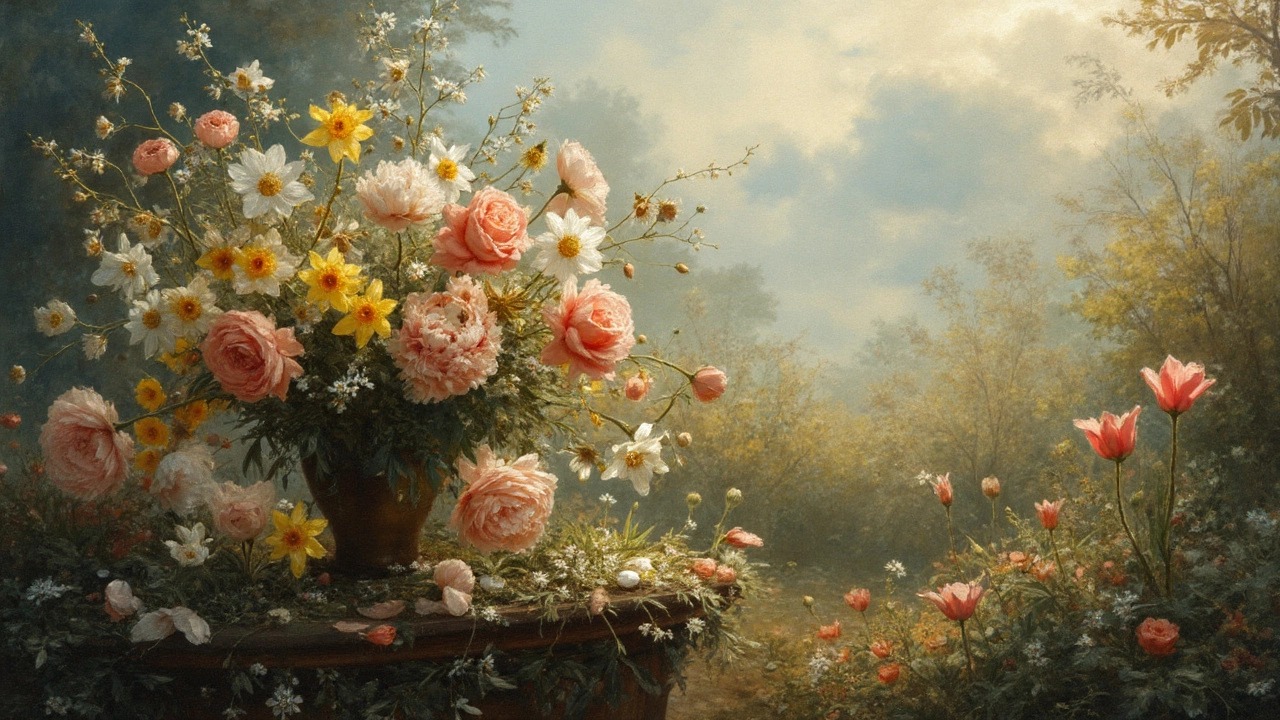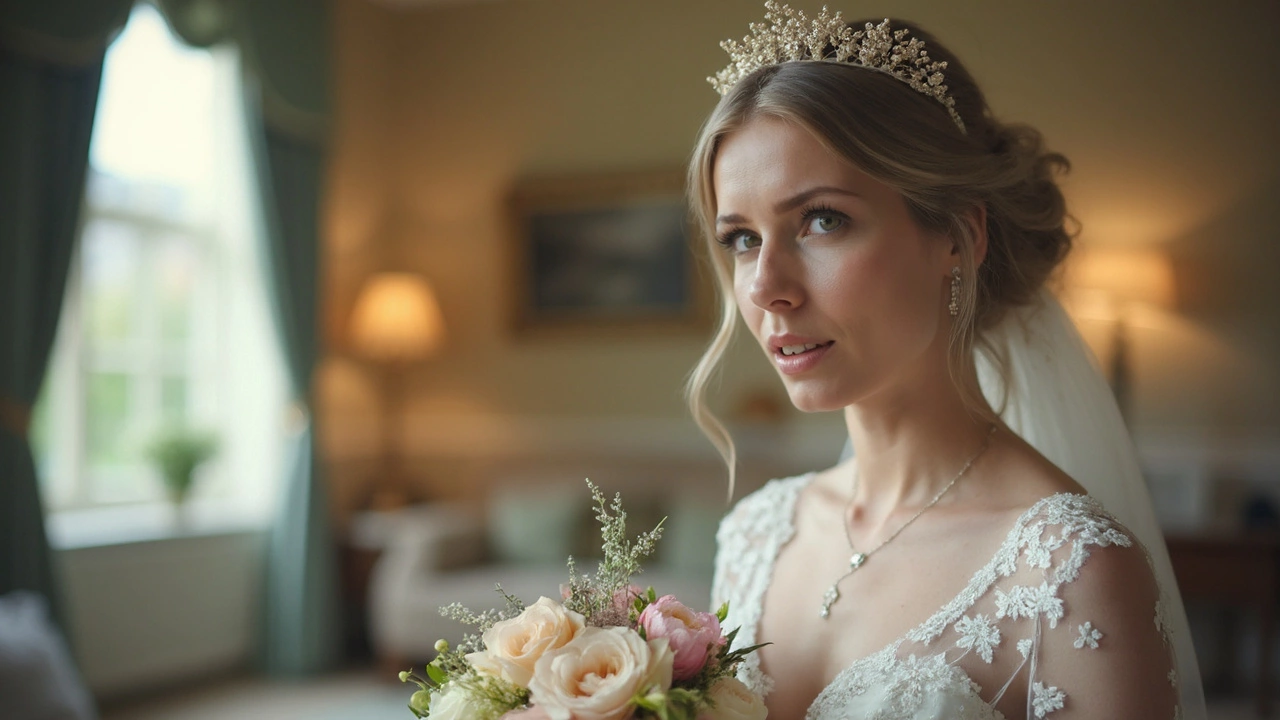Weddings are all about creating the perfect atmosphere, and flowers play a massive role in this! But have you ever thought about what happens when certain flowers clash in a bouquet? Not every bloom is meant to be friends with another. Some can even cause a bit of drama, from scent competition to different care needs. Yikes, right?
Ever picked up a bouquet only to find that some flowers wilt way faster than the others? That's usually because they have different watering requirements. It’s like one dry flower party pooper next to a water-loving blossom isn't helping your bouquet stay fresh for your big moment.
- Why Flower Choices Matter
- Scent Clashes
- Watering Needs Conflict
- Sunlight Preferences Diverge
- Tips for Creating a Harmonious Bouquet
Why Flower Choices Matter
Choosing the right flowers for your wedding isn't just about aesthetics. It's about creating a vibe that reflects your day. The wrong flower choices can indeed throw off more than just the look of your wedding flowers—they can affect scents and even how long those pretty petals will last.
Visual Appeal
Let's face it, no one wants a bouquet that's all over the place style-wise. Some flowers naturally work better together due to their colors and sizes. For instance, pairing huge sunflowers with delicate baby's breath might make the latter seem lost in the bouquet.
Aromatic Harmony
Then there are the scents. Ever noticed how some flowers have super-strong smells while others are almost odorless? Mixing heavy scent blossoms like gardenias with something subtle can result in some strange scents that your guests might not love.
| Flower | Scent Intensity |
|---|---|
| Gardenia | High |
| Lilies | Medium |
| Daisies | Low |
Survivability
Ever wondered why some flowers wilt faster than others? It's because they have different needs. Flowers like roses and tulips demand more water, so if one wilts earlier, it hints that they might not be the best combo in a tight space like a bouquet.
Emotional Significance
Flowers are more than just pretty—they symbolize emotions and meanings. Knowing what each flower represents can add an extra layer of personalization to your arrangements. Red roses scream passion, while white lilies often symbolize purity.
So there you go! Your flower choices deeply impact the overall feel and memories of your day. Choose wisely, and you'll have a bouquet that's as harmonious as your wedding vows. Stick to these tips, and you won't regret your floral decisions!
Scent Clashes
When it comes to planning your wedding, not many people think about how diverse flower scents can get in a bouquet. However, mixing certain aromas might lead to a less-than-pleasant aromatic experience.
Take lilies and roses for example. They might look stunning together, but their scents can battle it out rather fiercely. Lilies have a potent fragrance that can overshadow the softer, classic smell of roses, leaving you with an unexpected overpowering aroma instead of a delicate blend.
Another tricky pair includes gardenias and lavender. Gardenias have an intense scent often associated with elegance, while lavender is more calming and mild. When combined, the gardenia’s strength can completely mask the lavender, potentially transforming calm into chaos.
Tips to Avoid Scent Clashes
- Test it out: Before you finalize your bouquet, experiment by placing different flowers together to ensure their scents agree.
- Go for balance: Pairing a strong-scented flower with one or two more subtle ones can help keep things harmonious.
- Consult a florist: Those flower pros can suggest compatible scents that won't turn your wedding aisle into a scent disaster zone.
Remember, while visual appeal is key, getting the scent blend right can make those wedding memories even sweeter, literally! So, when planning your wedding flowers, keep in mind that not every bloom is nose-friendly with another.

Watering Needs Conflict
When it comes to wedding flowers, understanding the different watering needs is crucial for keeping those blooms fresh throughout the celebration. It's wild how some flowers demand a constant drink, while others are basically desert lovers.
Take roses and succulents, for instance. Roses love their water, craving frequent hydration to keep their luscious petals plump and vibrant. On the other hand, succulents, being the cacti cousins they are, thrive with minimal water. Pairing these two means someone's gonna be unhappy.
Another common combo gone wrong is tulips with hydrangeas. Hydrangeas practically scream for water, soaking it up like there's no tomorrow. Tulips? Well, they prefer a more moderate approach, wilting if left in a deluge. Mixing these two can leave you with droopy tulips before the vows are even exchanged.
The Balancing Act
So, how to strike a balance? Here are a few tips:
- Group similar water-loving flowers together. Stick roses with lilies, and keep your succulents snug elsewhere.
- Consider hidden water sources, like floral foam, which can provide hydration to needy blooms while leaving the rest happy.
- If mixing is a must, check with your florist for any secret tricks to help manage those diverse needs.
A little planning goes a long way in avoiding bouquet disasters and ensuring every bloom looks its best on your big day.
Sunlight Preferences Diverge
Ever wondered why some flowers in a bouquet seem to wilt faster, even if the rest are in full bloom? It might be due to varying sunlight needs. Just like humans, flowers have different sunbathing habits! Some love the spotlight, basking in all-day sunshine, while others prefer lounging in the shade.
Take sunflowers, for example. These guys can't get enough of the sun's rays. They've even been known to chase the sun as it crosses the sky—talk about dedication. But throw in a shade-loving flower like ferns into the same bouquet, and you've got a floral feud on your hands. While the sunflower is thriving, the fern is wilting from too much exposure.
Mix and Match Smartly
Now, you don't have to be a horticulturist to make a perfect bouquet. Just keep these sunlight preferences in mind:
- High sunlight lovers: Sunflowers, daisies, and marigolds.
- Shade-loving types: Ferns, hostas, and certain orchids.
Keeping these sunlight needs in mind will help you choose blooms that work best together. This way, you'll avoid last-minute surprises on your special day.
Did You Know?
Some florists recommend arranging your wedding flowers where they mimic their natural habitat positioning. For instance, placing shade-loving plants deeper within an arrangement can simulate the protective canopy of their native environments. Sneaky, right?
Understanding these sunlight diversities is part of creating a harmonious wedding flowers setup. It’s these little details that contribute to a picture-perfect bouquet!

Tips for Creating a Harmonious Bouquet
Crafting that perfect wedding bouquet isn’t just a walk in the park. It’s all about balance and harmony. Here are some practical tips to make sure your wedding flowers complement each other beautifully!
Match the Scents
Ever had too many perfumes in one room? Flowers can be like that too. Some blooms, like lilies, have strong fragrances that can overwhelm delicate scents from roses. Aim for flowers with complementary or subtle scents to keep everyone breathing fresh.
Consider Water Needs
Water is life, especially for flowers. Some flowers, like tulips, guzzle more water than others like succulents. Group flowers with similar hydration needs to ensure they last through the day. It's like pairing up marathon runners and sprinters - keep them on similar playing fields.
Think About Sunlight Preferences
The best bouquets are those where all members thrive in similar conditions. Sunflowers, for instance, soak up lots of sun, whereas gardenias prefer shadier spots. Knowing this helps in arranging and storing the blooms before they grace the aisle.
Test Different Color Palettes
Color is key in creating vibe. Though bold contrasts can make a statement, sometimes sticking to soft, analogous colors can keep things elegant. Imagine pastel shades of pinks and purples instead of a jarring red and yellow combo.
Personalize with Seasonal Blooms
Seasonal flowers are typically fresh and more affordable. Plus, they naturally fit together as they bloom in similar environments and times. A spring bouquet of daffodils, tulips, and hyacinths can be both budget-friendly and stunning.
Here’s a quick guide:
- Winter: Camellias, hellebores, snowdrops
- Spring: Peonies, lilacs, irises
- Summer: Dahlias, sunflowers, lavender
- Fall: Chrysanthemums, asters, marigolds
With these pointers, you're on your way to assembling that dream bouquet that will not only look great but hold together beautifully all through your special day!

